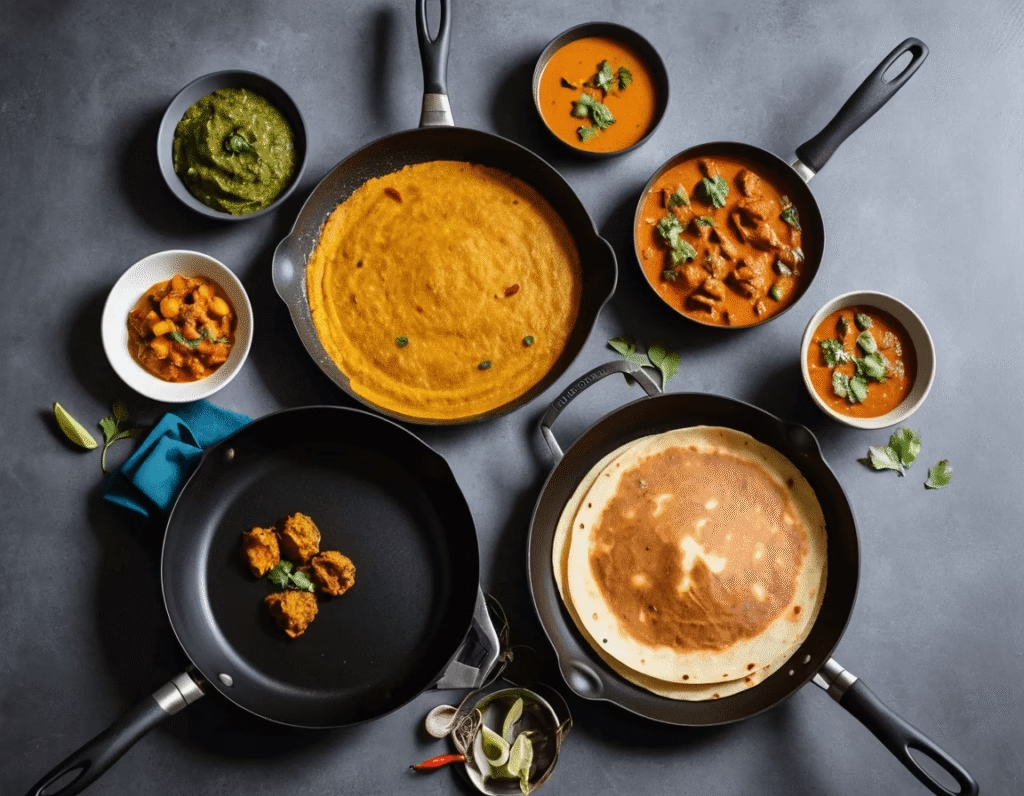


Choosing the right cookware can transform your cooking experience, especially in an Indian kitchen where we deal with deep frying, sautéing, pressure cooking, and more. Two of the most popular choices in the market today are Non-Stick Cookware and Hard Anodized Cookware.
But which one is better for your kitchen? In this blog, we’ll compare non-stick vs hard anodized cookware in detail to help you make the best buying decision.
Non-stick cookware is made by coating aluminum or other metal with a layer of Teflon (PTFE) or other non-stick material. This prevents food from sticking to the surface and allows for low-oil cooking.
Hard anodized cookware is made by electrochemically hardening aluminum, making it stronger and more durable. The surface is non-reactive, scratch-resistant, and conducts heat evenly.
| Feature | Non-Stick Cookware | Hard Anodized Cookware |
| Oil Usage | Low (best for low-oil recipes) | Medium (needs oil but less than steel) |
| Heat Resistance | Medium (not ideal for high heat) | High (great for Indian cooking) |
| Durability | Moderate (coating may wear) | High (long-lasting) |
| Cleaning | Very easy | Easy |
| Weight | Lightweight | Slightly heavier |
| Scratch Resistance | Low (needs care) | High (tough surface) |
| Price Range | Budget-friendly | Mid to premium |
| Best For | Eggs, pancakes, dosas, light frying | Gravies, sabzi, deep frying, tadkas |
For light, low-oil meals and quick recipes, non-stick cookware is a great pick.
But if you regularly cook intense Indian meals—like sabzis, biryanis, deep-fried snacks, or spicy tadkas—hard anodized cookware is more suitable due to its durability and high-heat performance.
If you’re just starting your kitchen or prefer quick, light cooking – go for non-stick.
If you’re serious about cooking and want performance with durability – invest in hard anodized cookware.
No matter which one you choose, United Kart offers the best, tested, and trusted options to suit Indian households.
🔗 Shop Premium Cookware Now – United Kart Official Store
Q1. Is hard anodized cookware safe for health?
Yes, it is non-toxic and non-reactive. Perfectly safe for daily use.
Q2. Can I use hard anodized cookware on induction?
Not all are induction-compatible. Check the product label before buying.
Q3. Which cookware is better for beginners?
Non-stick is easier to handle and more beginner-friendly.